Types of Drones - Fixed Wing
Fixed wing UAVs can carry various payloads and data-link equipment. The fixed-wing has the longest range over any of the other categories. However, the downside to this platform is the requirement for a runway during landing or takeoff. This issue is currently being resolved by UAV manufacturers by developing a fixed wing aircraft with the ability to take off vertically and transition to horizontal flight. This type of fixed-wing aircraft has Vertical Takeoff and Landing (VTOL) technology.
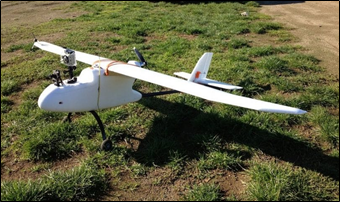
How Does a Fixed-Wing UAV Fly?
To calculate and mitigate risks associated with fixed-wing aircraft, it is helpful in having a basic understanding of how an aircraft operates. This allows the entity concerned with mitigating risks posed by UAVs to understand the aircraft limitations.
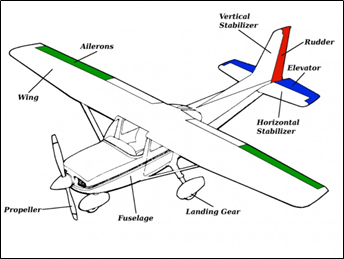
What are the Forces Operating on a Fixed-Wing UAV During Flight?
There are four main forces operating on an aircraft while in flight.These are:
- Lift
- Gravity
- Drag
- Thrust
During steady flight these four forces are in equilibrium, which means thrust counteracts drag and lift counteracts gravity. This is illustrated in the figure shown below.
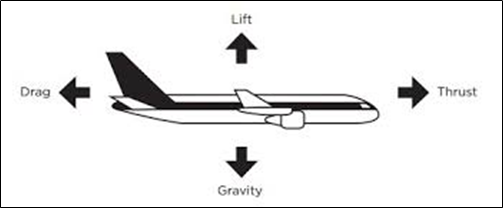
Not only are these forces present on a fixed-wing aircraft, but also on all the other categories presented. To understand how the lift is generated, a cross sectional view of the wing and the airflow surrounding the wing is analyzed. This cross-sectional view of the wing is called an “airfoil”. There are many variations of the airfoil, each providing different flight characteristics.

As shown above, the airfoil creates an area of low pressure on the top surface of the airfoil and an area of high pressure on the lower surface. This is caused by the airfoil shape “turning” the flow downward. As a result, the air flow over top of the upper surface generates a low-pressure region causing the wing to be lifted upward.
How does an Aircraft Maneuver?
The control of an aircraft is comprised of three maneuvers. These maneuvers are;
Roll- This maneuver will rotate the wings right or left around the fuselage of the aircraft.
Pitch – This is what makes the aircraft climb and descend.
Yaw- This is the turning of the airplane. This maneuver points the nose of the aircraft to the right or left.
Each of these maneuvers are a result of moving the control surfaces on the aircraft. The three main control surfaces on an aircraft are:
Ailerons – Control the roll of the aircraft.
Rudder- Control the yaw of the aircraft.
Elevators – Control the pitch of the aircraft.
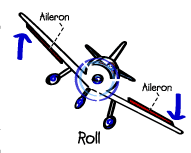
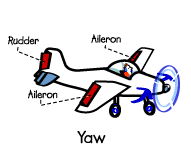
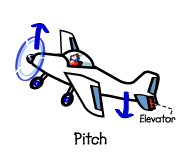
Can a Fixed-Wing be Used in Negative Ways?
The fixed-wing category of UAVs is the most diverse as far as payload types, range, endurance, and what they can be used for. To illustrate the usefulness of the fixed-wing category, this article will breakdown the fixed-wing aircraft based on size to highlight what each size category is generally utilized for.
- Large fixed wing (10lbs or higher)
- Medium fixed wing (2lbs-10lbs)
- Small fixed wing (2lbs or less)
Fixed Wing Flight Benefits
- Long range and endurance
- High altitude is capable of making detection difficult
- Can carry relatively heavy objects
- Quiet during operation
Looking at this UAV from a security standpoint, this model could be used for various missions:
- Surveillance - Mounting a camera on the bottom of the fixed-wing provides a stable platform for high altitude photography.
- Flying Weaponry – This model can easily be retrofitted to carry a gun and programmed to fire at the command of the pilot.
- Dropping Supplies/Explosives – These fixed-wing aircraft can be retrofitted to carry supplies and explosives that can be dropped from a high-altitude design to impact a specific target. This makes for difficult detection and with long range and high endurance capabilities a small chance of the pilot being discovered.
Large Fixed-Wing
Large fixed-wing UAVs generally have a high endurance, long range, and high payload capacity. There are many different types of these platforms available on the market today. For a general idea of the performance of this class of UAVs, the MyTwinDream 1.8m UAV was selected.
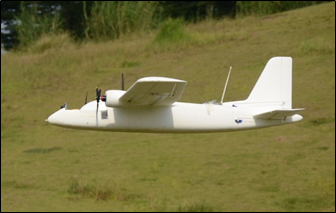
This aircraft is comprised of a foam structure with twin motors. The battery used in this specific aircraft is a 14.8v Lithium Polymer (Li-Po) 20Ah battery. This aircraft has a “cruising current” of 10 Amps. As seen in the calculation below this aircraft is capable of a maximum flight time of 1.5 hours.

Estimating a propeller pitch size of 7”, this aircraft is capable of achieving a range of approximately 62 miles.
This aircraft can carry a wide variety of payloads. With large enough motors this aircraft could possibly carry up to 20lbs of payload. With carrying this large amount of payload, it is expected that the range may drop from 62 miles to approximately 20 miles. This specific aircraft is also capable of being “hand-launched” so a large runway is not needed for takeoff or landing. This enables discreet takeoff and landings.
With a large fixed-wing aircraft’s capability of long range missions, this makes them the perfect platform for carrying heavier payloads while still having significant range capabilities. This platform could be used for smuggling drugs across borders, air-delivered packages into secure areas, and even long-term surveillance from high altitudes. The total cost of this model is around $2,200.
Medium Fixed-Wing
Medium Fixed- Wing UAVs generally have a high endurance, long range, and low payload capacity. This is most likely the most popular fixed-wing size range available on the market today. For a general overview of the performance that can be seen from this UAV class, the Volantex Firstar V2 is highlighted.
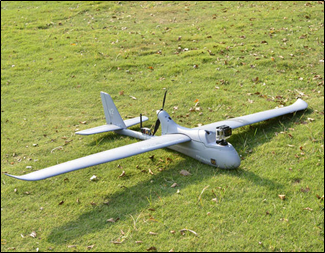
This aircraft has a wingspan of approximately 80” and weighs around 7 pounds with no payload. The maximum sized battery that can be used with this aircraft is a 14.8v 20Ah Lithium Polymer battery. The cruising current with no payload is around 10amps. This would mean the Firstar has an endurance of 1.5 hours. Since this aircraft’s propeller pitch and motor Kv are slightly higher than the long-range aircraft this platform has a longer range of approximately 100 miles.
This medium sized UAV with high endurance and long-range capabilities makes a great platform for high altitude surveillance and even dropping small payloads without being easily detected. The total cost of this model is around $1,250.
Small fixed-wing
Small fixed-wing UAVs generally are capable of long endurance and long-range flights. However, they lack the required wing area necessary to carry large amounts of payload. For the small fixed-wing category, the Strix Nano Goblin is highlighted.
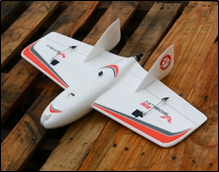
This specific platform has an endurance of around 50 minutes and a range of around 80 miles.
This platform is not designed to carry large amounts of payload, however can be used as a “kamikaze aircraft” to inflict relatively large amounts of damage due to its impressive speeds of +100 mph in a dive. The total cost of this model is around $500.





.png?width=2030&height=497&name=Background%20(1).png) Airsight is a leading sUAV security software company that specializes in delivering sUAV Airspace Detection Solutions for Critical Infrastructures, Universities, Spectator Sports, Prisons, Events, and more. Our UAV security experts integrate projects of all scopes and sizes nationwide, through a
Airsight is a leading sUAV security software company that specializes in delivering sUAV Airspace Detection Solutions for Critical Infrastructures, Universities, Spectator Sports, Prisons, Events, and more. Our UAV security experts integrate projects of all scopes and sizes nationwide, through a